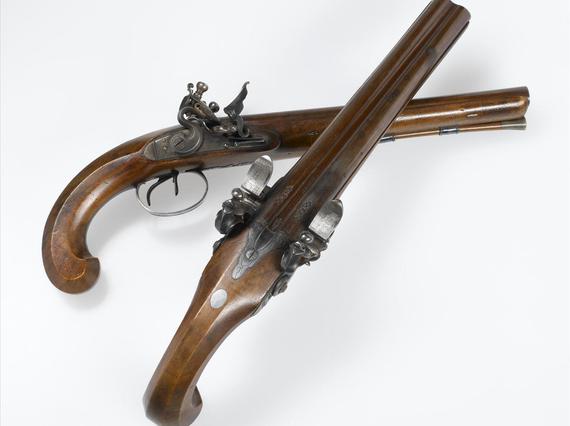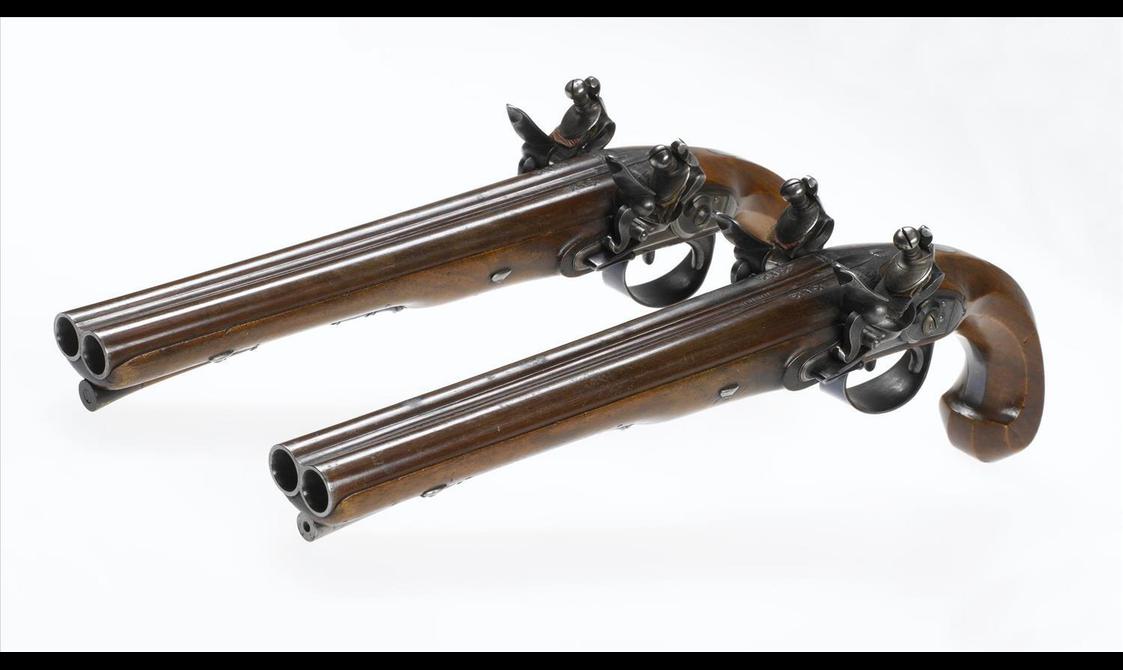
Pistols belonging to Robert Burns
News Story
This prized set of pistols belonged to Robert Burns, Scotland's national Bard. But why would the poor and struggling poet have needed such handsome weapons?
Why did Burns need these pistols?
In 1788 Robert Burns took a lease on a farm at Ellisland near Dumfries. A year later, due to the state of his finances, Burns became an officer of the government’s Department of Excise, while continuing to farm at Ellisland.
Working for the Excise could be dangerous, and in 1788 Burns had received a pair of pistols made by Blair of Birmingham. These would prove useful for his personal protection in his new post. By 1791 his farm at Ellisland had failed, forcing Burns to move to Dumfries to become a full-time exciseman.
Image gallery




The poet's radical opinions caused trouble with his employers. Burns shared many of the views of the political reformers and had a rather ambiguous attitude to being a government employee, as his poem 'The Deil's awa wi' the Exciseman' suggests.
The deil cam fiddlin' thro' the town, And danc'd awa wi' th' Exciseman, And ilka wife cries, "Auld Mahoun, I wish you luck o' the prize, man.
Robert Burns, 'The Deil's awa wi' the Exciseman', 1792
How do we know the pistols belonged to Burns?
It takes some detective work to determine whether these double-barrelled flintlock pistols are in fact the ones for which Burns wrote to thank Blair. Burns reputedly gave the pistols on his deathbed to his physician William Maxwell. Maxwell in turn gave them to the Roman Catholic Bishop James Gillis, who later presented them to the Museum. When in 1859 an anonymous author claimed that Burns' pistols were in his family's possession, Bishop Gillis realised that he had donated the wrong pistols, searched Maxwell's effects and rectified his mistake.
So are these the right ones? They are certainly weapons of good quality. The Museum's pistols were made in Birmingham, not London. Blair did have a workshop in Birmingham, but his guns were often stamped 'London' to show their quality was acceptable to the London market. And Burns' letter of thanks to Blair was addressed to St Paul's Square, Birmingham. This all suggests that the Museum's pistols are very much the genuine article.
These defensive tools do more than half mankind do. They do honour to their maker. And I trust that with me they shall have the fate of a miser's gold, to be aft admired but never used.
Robert Burns in a letter to Blair, 1788
The pistols are on display at the National Museum of Scotland.


